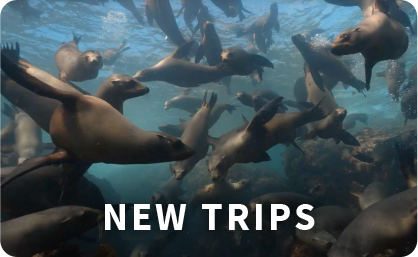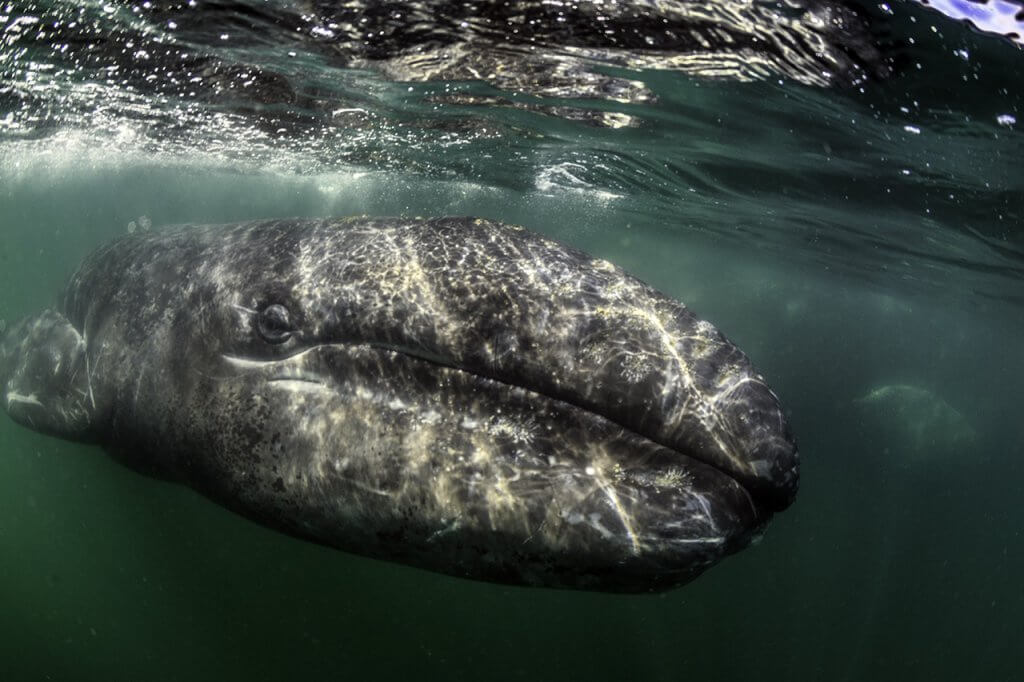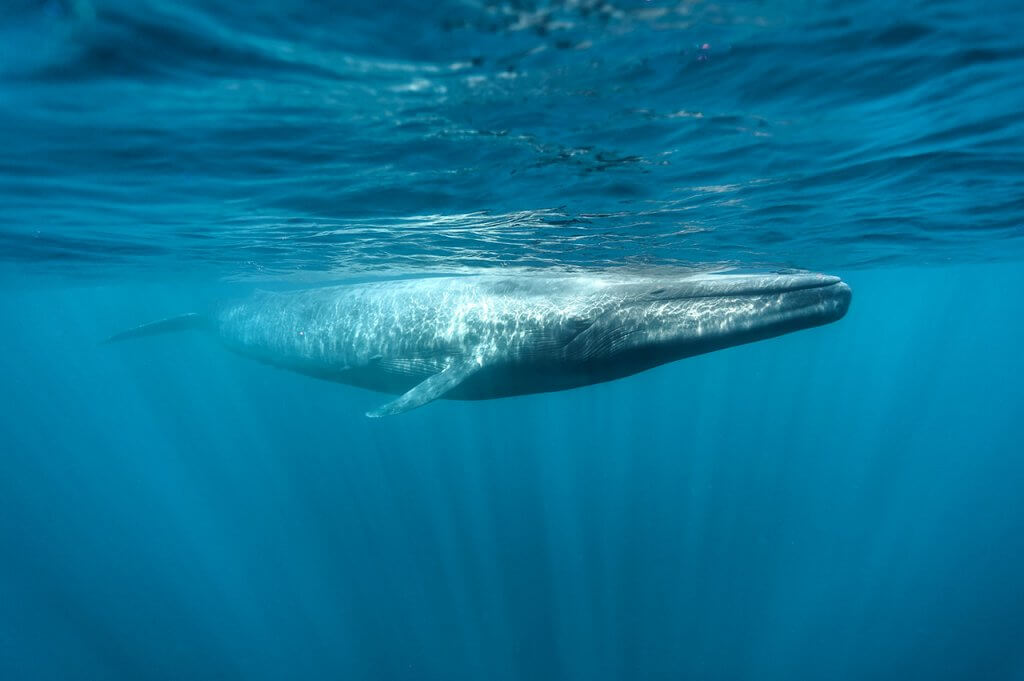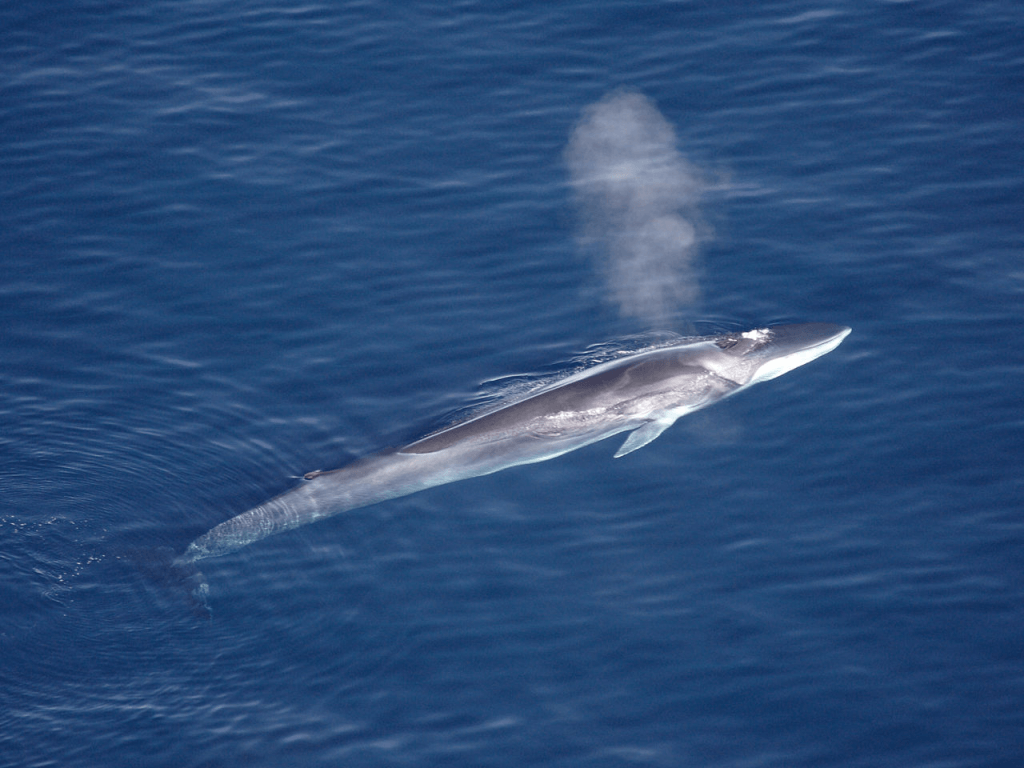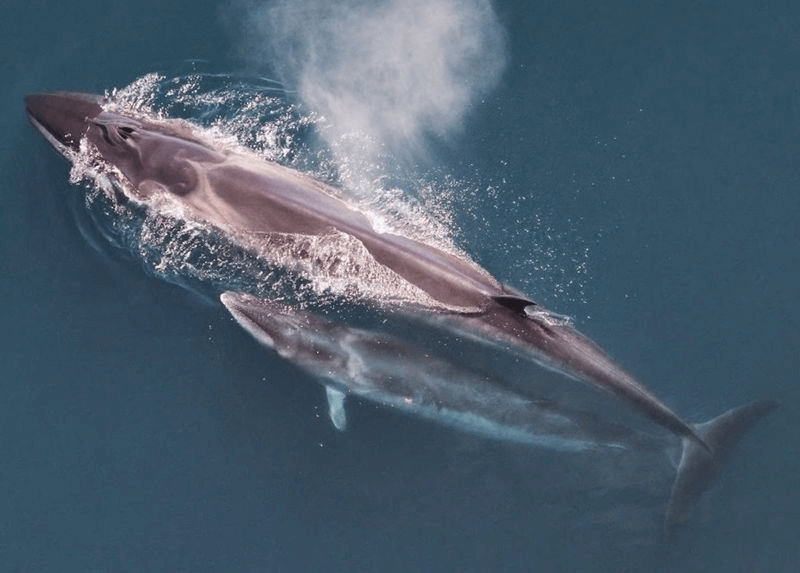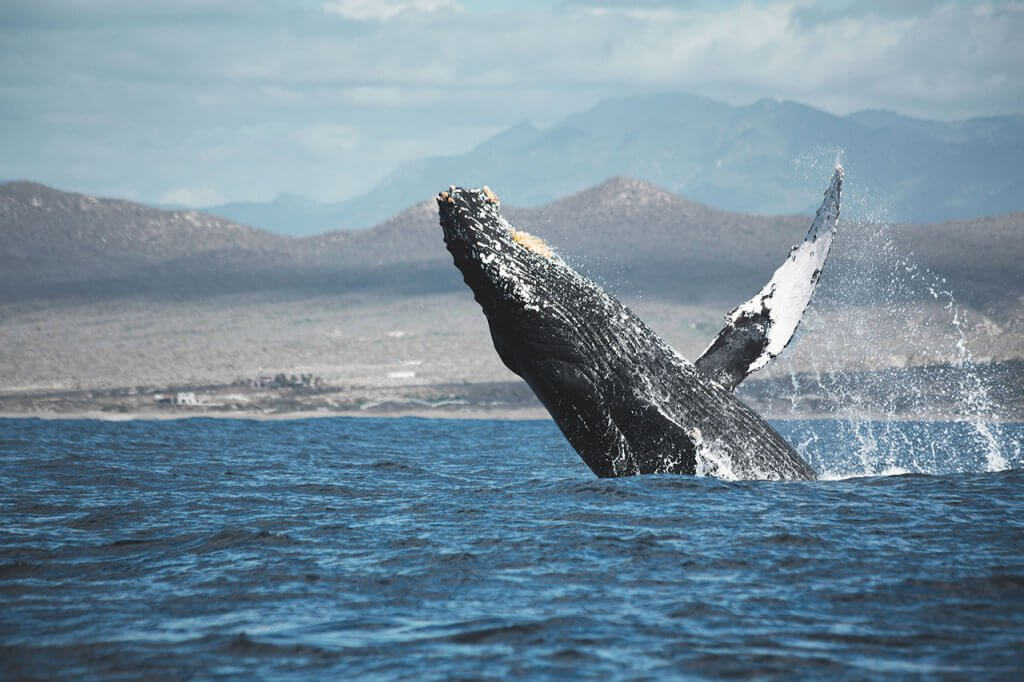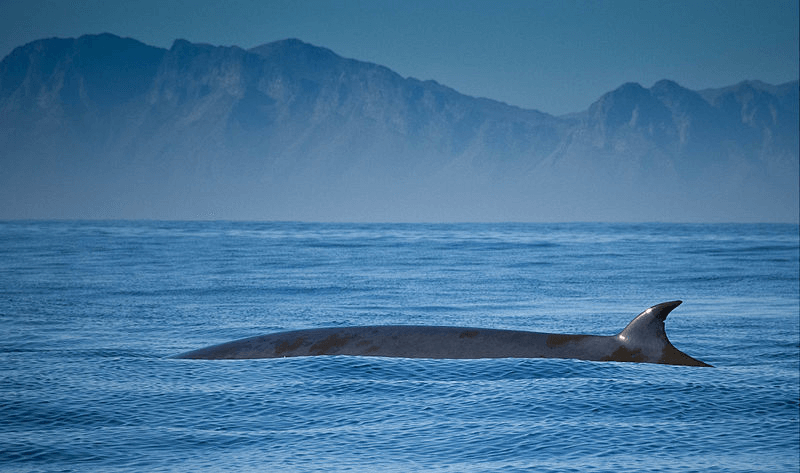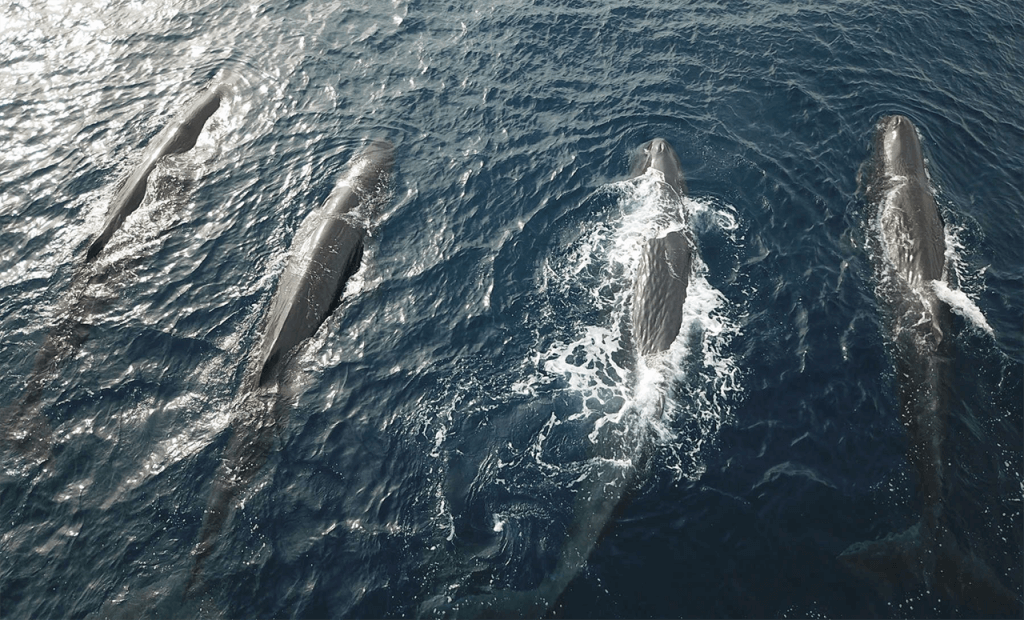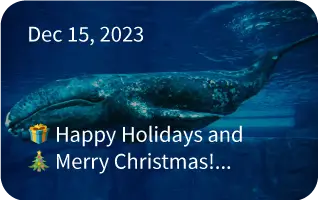There is nothing quite like witnessing your very first whale. Or your second. Or, if we’re being honest, any sighting for that matter. Whether witnessing these giants defy gravity as they corkscrew out of the ocean or the tender interaction between a mother and calf, whale watching regularly tops the bucket list for travelers. One of the best places in the world for whale watching, Baja California is home to a wide variety of cetaceans – in fact, over one third of the world’s whale species spend time here each year. Read on to discover the whales of Baja making a splash…
Gray Whales
The whale closest to our hearts at Baja Expeditions, these gentle giants may not be the largest, swiftest or most elegant whale in the sea, but they might just be the friendliest. Between January and March, gray whales will mate and breed in the warm, shallow waters of Baja California, and San Ignacio Lagoon is one of the best places to experience unforgettable gray whale interactions. Join our wilderness glamping expedition to this remote lagoon and witness friendly gray whales approaching our boats to be petted and stroked by our lucky guests. For more fun facts about gray whales, read our top ten facts about gray whales blog.
Blue Whales
The largest animal in the world, blue whales reach almost 100 feet in length and weigh 190 tons! The upwelling currents around the islands dotting the Sea of Cortez provide nutrients supporting masses of krill – the blue whale’s favorite food. They can take in up to four tons of krill per day as they cruise our waters. Join us on a guided kayaking adventure (suitable for all ages and experience levels) or set sail on an intimate charter for eight aboard out 45-foot Leopard sailing catamaran to see these whopping great whales in the protected park off Loreto – one of the best places to see blue whales in Baja.
Fin Whales
Fin whales are the speediest whales in the world, swimming up to 25 miles per hour. Baja Expeditions has been running expeditions to Isla San José in the Sea of Cortez for 40 years, where you can witness a resident population of fin whales, thought to be a genetically isolated group, speed past our boats.
Sei Whales
Called the “cheetah of the sea” by some naturalists, the sei whale can swim at great speeds over short distances. They are currently classified as endangered, having only recovered to one-third of their pre-whaling population.
Humpback Whales
The incomparable opera singers of the sea, humpback whales are migratory and visit the waters of Baja each winter and spring. Known to be very active and spry, they often delight us with their acrobatic shows and lyrical songs. But did you know that only the males sing? They all sing the same song wherever they are in the world and the song gradually evolves and changes. While some whales perform like an opera singer, when we listen in with our hydrophone it becomes clear that other males are more challenged in the singing department. An adult male sings at 130 + decibels, which would be enough to stun you and likely knock you unconscious if you were close in the water. We see them from Cabo San Lucas south to Socorro and north as far as Cabo.
Bryde’s Whales
Bryde’s whales are actually a complex of two to three different species. In the Sea of Cortez, they feed on sardines and herring using a variety of hunting techniques, from surface skimming to bubble nets.
Sperm Whales
The largest toothed whale, sperm whales dive to extraordinary depths and are known for ferocious struggles with Architutheous, the giant squid. They hunt in the dark depths of the sea using echolocation, and following a deep dive, need to rest on the surface to reoxygenate their blood. These whales are very distinctive on the surface with their “double blow” and anytime we’ve seen them they have been “logging” or resting on the surface; from the northern Sea of Cortez to right off Cabo San Lucas and as far south as Socorro, they are quite a sight to behold. Watch out for Moby dick!
Minke Whales
At only about 25-feet long, minke whales are the smallest of the rorqual family and are one of the most abundant whale species worldwide. Seasonal visitors to the Sea of Cortez, they travel here to breed and birth from December through to April. https://www.youtube.com/embed/1ug8VXFGWdk?autoplay=0&controls=1&fs=1&modestbranding=0&theme=dark&rel=0&loop=0
Orcas
Despite being named killer whales, orcas are not technically whales, but a part of the dolphin family. Nevertheless, killer whales are the top ocean predator, possess great intelligence and are a sight to behold. In the Sea of Cortez, they follow their primary food sources and roam the seas hunting sea lions, turtles and squid. They live in family groups and execute complex hunting strategies with cooperation. For the crème de la crème of animal encounters, visit the Sea of Cortez between April and June to witness pods of orcas hunting on the annual aggregation of schooling mobula rays. Interacting with the mobula rays is incredible experience and topping it off with an orca sighting is unforgettable. You can also witness orcas from late October to December off Magdalena during the annual Mexico sardine run – this is the second largest sardine run in world so you’re in for a treat.
To get the chance to see the whales of Baja California for yourself, join our Wild About Whales Week, offering four days of friendly gray whale encounters at San Ignacio Lagoon combined with three nights at our Espiritu Santo Eco-Camp.
Better yet, our February 20th nine-day whale cruise aboard the luxurious 116-foot Gallant Lady yacht will explore the coast of Baja California from La Paz to San Ignacio Lagoon. Contact us for details on this exclusive trip to see the whales of Baja!
Photo credit: Humpback whale and calf by Craig Dietrich, fin whale by Aqqa Rosing-Asvid, sei whale by Christin Khan, humpback whale breaching by David Seradell, bryde’s whale by Jolene Bertoldi



